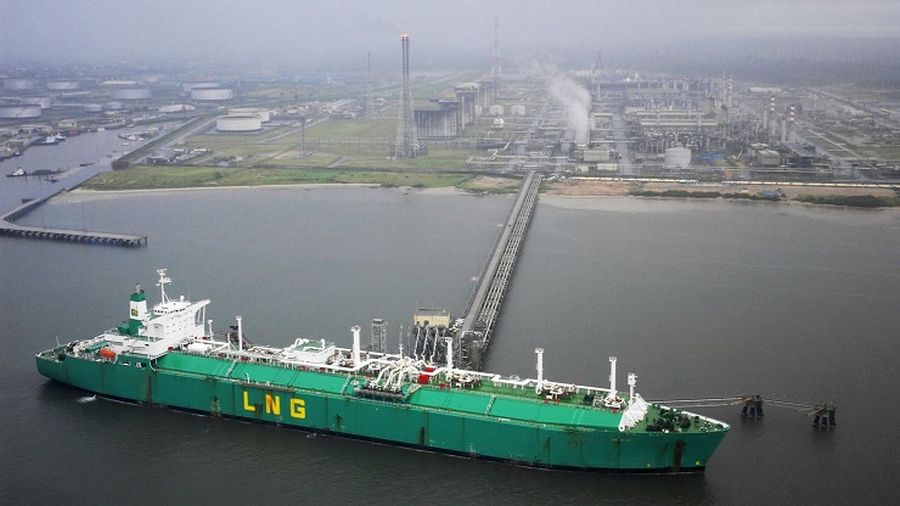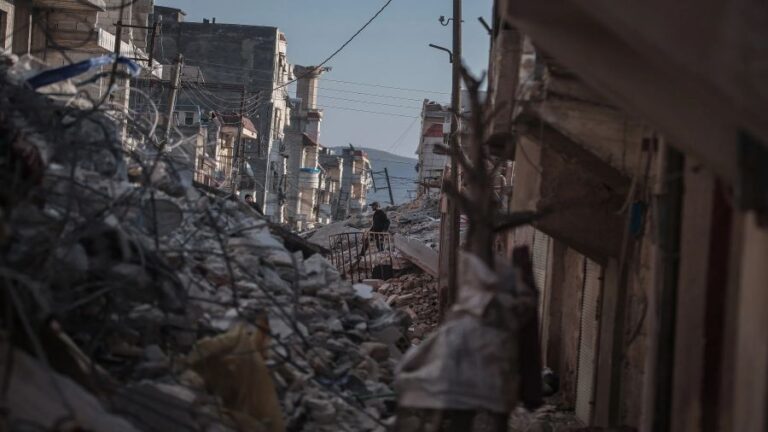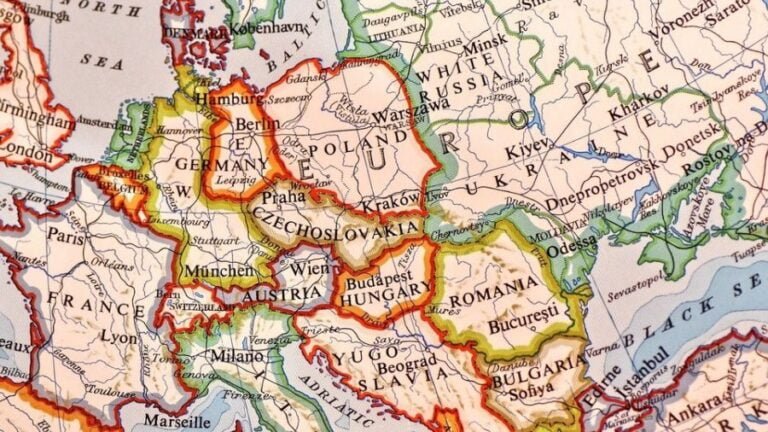US and Europe are Ripping Off All of Africa’s Gas
Following Washington’s Russophobic instructions, European politicians are touring the world in search of free gas to reduce dependence on Russia. And they have identified Africa as the key region in this regard. The countries of the Arab world are less actively considered by the Europeans, understanding that they are not eager, if it is to their disadvantage, to change their position of benevolent neutrality towards Russia in the conflict between Moscow and the West. And this was demonstrated in particular by the recent conflict between Saudi Arabia and the US in response to Washington’s demand for a stranglehold on Russian oil exports.
Italy is known to be the EU’s second largest buyer of Russian gas after Germany. If one were to look at the place of African imports in Italy’s overall gas balance, it is easy to see that Italy’s annual natural gas consumption is around 75 bcm, of which almost 40% (29 bcm) currently comes from Russia. Another 20% according to the 2020 data is provided by Algeria, although Rome expects to increase Algeria’s share of its gas market to 40% after extending its gas contract with the country on April 11, while reducing Russian gas imports to 20%. 13% of Italy’s gas consumption comes through the Adriatic Pipeline (TAP) from Azerbaijan, 12% from the North Sea region and 4% from Libya. Another 4% comes from Italy’s own natural gas production.
Having shown a particular servile zeal in recent months to comply with any instructions from Washington, particularly those of a Russophobic nature, the current Italian authorities have already declared their intention to replace Russian gas by increasing imports from African and Arab countries. To this end, a government delegation has visited Algeria, Libya, Egypt, Qatar, Nigeria, Angola, and Congo, and Prime Minister Mario Draghi plans to visit Mozambique in May.
As a result of negotiations conducted by Italian representatives, Rome expects that the agreement with Egypt could lead to the delivery of up to three billion cubic meters of liquefied natural gas (LNG) to Europe, and to Italy in particular, this year, ENI said earlier. Europe hopes Egypt can become a major hub for liquefied natural gas trade in Africa and the Mediterranean. This is supported by the rapid development of natural gas production, recent new gas discoveries and strategic agreements with Eastern Mediterranean exporting countries to import gas for processing at the country’s existing liquefied natural gas facilities and further re-export of LNG.
Algeria is now Italy’s second largest supplier, accounting for about 30% of its gas consumption. ENI said the deal with Algeria’s Sonatrach would increase fuel supplies through the Transmed subsea pipeline “to nine billion cubic meters a year” by 2023-2024 (although back in 2021 Transmed had a free capacity of just 7.8 billion cubic meters a year!).
However, when it comes to Algeria, it is unlikely to be able to cope with the task of replacing Russian gas for Italy and Europe as a whole. This was explicitly acknowledged by the director general of Algerian oil and gas company Sonatrach, Tawfik Hakkar, in early April. However, it should not be forgotten that Algeria may in fact have fewer resources to increase gas exports than the EU is trying to portray. Algeria now supplies 11% of the European gas market, but production has been stagnant since 2018, reserves are depleting, investments are still insufficient and there are also management problems.
On April 21, Italian Foreign Minister Luigi Di Maio announced on his social media page that the Italian government had signed intentions to expand gas agreements with the West African states of Angola and Congo. According to Italian media reports, under an agreement with the Democratic Republic of Congo, Italy intends to import more than 4.5 bcm of liquefied natural gas (LNG) annually from Congo starting in 2023. From next year, gas imports from Congo, together with Algerian imports, could approach a total of 6 bcm. In order to get more LNG from Africa, Italy is considering buying or leasing two floating storage and regasification units (FSRUs).
However, even rough estimates show that Italy will need at least 15.5 bcm of Russian gas next year, as it cannot replace this amount anywhere else. In addition, to receive liquefied gas from external suppliers, Rome would need special equipment, of which there are only three units in Italy, a circumstance that would not allow the Draghi government to implement Washington’s directive to replace half of Russian imports from other (primarily African) directions by 2023.
However, the diversification announced by Prime Minister Draghi will not be cheap, warn experts, who foresee additional taxes being shifted to Italian businesses and households, which could lead to anti-government demonstrations.
US experts have also planned that Spain could become a new EU gas hub in order to eliminate natural gas supplies from Russia by 2030. These calculations were based on the fact that Spain has the most extensive gas infrastructure in Europe, enormous storage capacity for gas delivered by sea, and two pipelines linking the country to gas fields in North Africa. But, Madrid admits, the volume of supply is “stuck” in the Pyrenees. The need for new and larger gas interconnections with the European grid, compatible with other renewable energy sources such as hydrogen and biogas, is therefore understandable and will take years to develop. The Spanish authorities are trying to secure energy supplies for the rest of the year, but this does not yet guarantee that the next winter will not be cold even for this country, Euronews reports.
The deterioration of African gas supplies to the EU via Spain is also largely due to Madrid’s recent decision to recognize Morocco’s sovereignty over Western Sahara, which has already provoked a serious crisis between Spain and Algeria. Spain imports almost half of the gas it consumes from Algeria, but last year, amid a diplomatic storm between Algeria and Rabat, the Algerian authorities blocked a pipeline that ran through Morocco and through which gas was delivered to Spain.
The African continent is known to have 7.1% of the world’s known natural gas reserves. By 2024, African countries will account for up to 10% of global gas production. That, and not just because of proximity, is why the EU has become increasingly interested in African gas, which interest has intensified against the backdrop of the US gas sanctions against Russia.
For example, Nigeria accounts for more than 50% of the continent’s LNG production, but an investment decision has already been made for the seventh line of the $12 billion Nigerian LNG project. The project will increase the country’s liquefied natural gas production by 35%, from the current 22 million tons to 30 million tons annually.
Anadarko has also made an investment decision for a new Area 1 natural gas liquefaction and export terminal project in Mozambique worth $20 billion, in addition to $14.7 billion ExxonMobil Area 4 project in Mozambique. However, these LNG projects in Mozambique were supposed to be a source of liquefied gas for East Asian markets.
At the same time, alongside the EU’s active march for African gas, demand for gas is also expected to continue to grow from the most developed states in Africa itself, where consumption of electricity, including gas-fired generation, is expected to increase. New investment decisions recently made in Nigeria, Mozambique, Egypt, as well as other countries, show that liquefied natural gas production is seen as a priority for Africa’s fuel and energy complex.
However, the EU’s active attempts to obtain ever greater supplies of African gas in pursuit of Washington’s Russophobic instructions have already been criticized in several states of the Dark Continent. The expected profits from the increasing gas supplies go mainly to gas companies, most of which are owned by European or American corporations. However, such an active outflow of gas disrupts the gasification plans of the African states themselves, the growth of their national economies, which need natural gas. These factors are already leading to a rise in anti-Western sentiment, in no small part supported by some Asian countries, which had also previously hoped to increase the flow of African gas, a large share of which, however, may now go to Europe.







